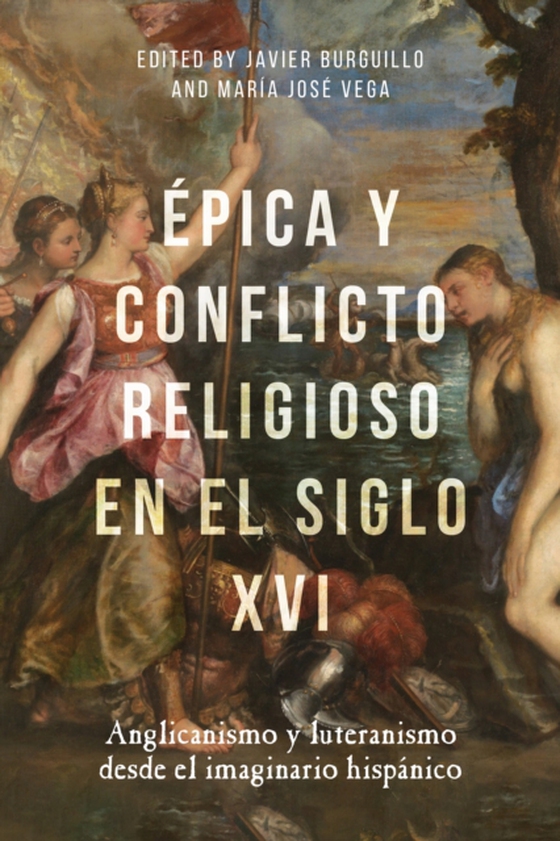
Épica y conflicto religioso en el siglo XVI e-bog
253,01 DKK
(inkl. moms 316,26 DKK)
How was religious conflict represented in sixteenth-century Spanish epic poetry?Este libro analiza un corpus de textos épicos y propagandísticos que se escriben en las fronteras del imperio español en el siglo XVI. Examina la representación del conflicto religioso en Inglaterra, Alemania y Holanda durante losreinados de Carlos V y Felipe II, y se centra en tres episodios, difundidos capilarmen...
E-bog
253,01 DKK
Forlag
Tamesis Books
Udgivet
15 januar 2021
Længde
238 sider
Genrer
1DSE
Sprog
Spanish; Castilian
Format
pdf
Beskyttelse
LCP
ISBN
9781787445963
How was religious conflict represented in sixteenth-century Spanish epic poetry?
Este libro analiza un corpus de textos épicos y propagandísticos que se escriben en las fronteras del imperio español en el siglo XVI. Examina la representación del conflicto religioso en Inglaterra, Alemania y Holanda durante losreinados de Carlos V y Felipe II, y se centra en tres episodios, difundidos capilarmente en la cultura visual y emocional europea y en torno a los cuales cristaliza la narración heroica: los martirios de cartujos y jesuitas en Inglaterra; la guerra de Esmalcalda; y el asedio de Amberes. El volumen considera las estrechas relaciones entre épica e historia; entre épica y cultura visual; y entre la poesía épica hispánica y la historia y la cartografíaiosa de Europa en unos años críticos en los que se construye la Iglesia Anglicana y se afianza el luteranismo en Alemania.
This book analyses a corpus of epic and propagandistic texts written at the margins of the Spanish empire in the sixteenth century. It examines the representation of religious conflict in England, Germany and Holland during the reigns of Charles V and Philip II, centring on three episodes widely disseminated in European visual and emotional culture and around which certain foundational Spanish heroic narratives emerged: the martyrdom of the Carthusians and Jesuits in England; the Schmalkaldic War; and the siege of Antwerp. The volume considers the close relationships between epic and history; between epic and visual culture; and between Hispanic epic poetry and the history and religious cartography of Europe during the critical years in which the Anglican Church was evolvingand Lutheranism gaining strength in Germany.
Este libro analiza un corpus de textos épicos y propagandísticos que se escriben en las fronteras del imperio español en el siglo XVI. Examina la representación del conflicto religioso en Inglaterra, Alemania y Holanda durante losreinados de Carlos V y Felipe II, y se centra en tres episodios, difundidos capilarmente en la cultura visual y emocional europea y en torno a los cuales cristaliza la narración heroica: los martirios de cartujos y jesuitas en Inglaterra; la guerra de Esmalcalda; y el asedio de Amberes. El volumen considera las estrechas relaciones entre épica e historia; entre épica y cultura visual; y entre la poesía épica hispánica y la historia y la cartografíaiosa de Europa en unos años críticos en los que se construye la Iglesia Anglicana y se afianza el luteranismo en Alemania.
This book analyses a corpus of epic and propagandistic texts written at the margins of the Spanish empire in the sixteenth century. It examines the representation of religious conflict in England, Germany and Holland during the reigns of Charles V and Philip II, centring on three episodes widely disseminated in European visual and emotional culture and around which certain foundational Spanish heroic narratives emerged: the martyrdom of the Carthusians and Jesuits in England; the Schmalkaldic War; and the siege of Antwerp. The volume considers the close relationships between epic and history; between epic and visual culture; and between Hispanic epic poetry and the history and religious cartography of Europe during the critical years in which the Anglican Church was evolvingand Lutheranism gaining strength in Germany.
 Dansk
Dansk

